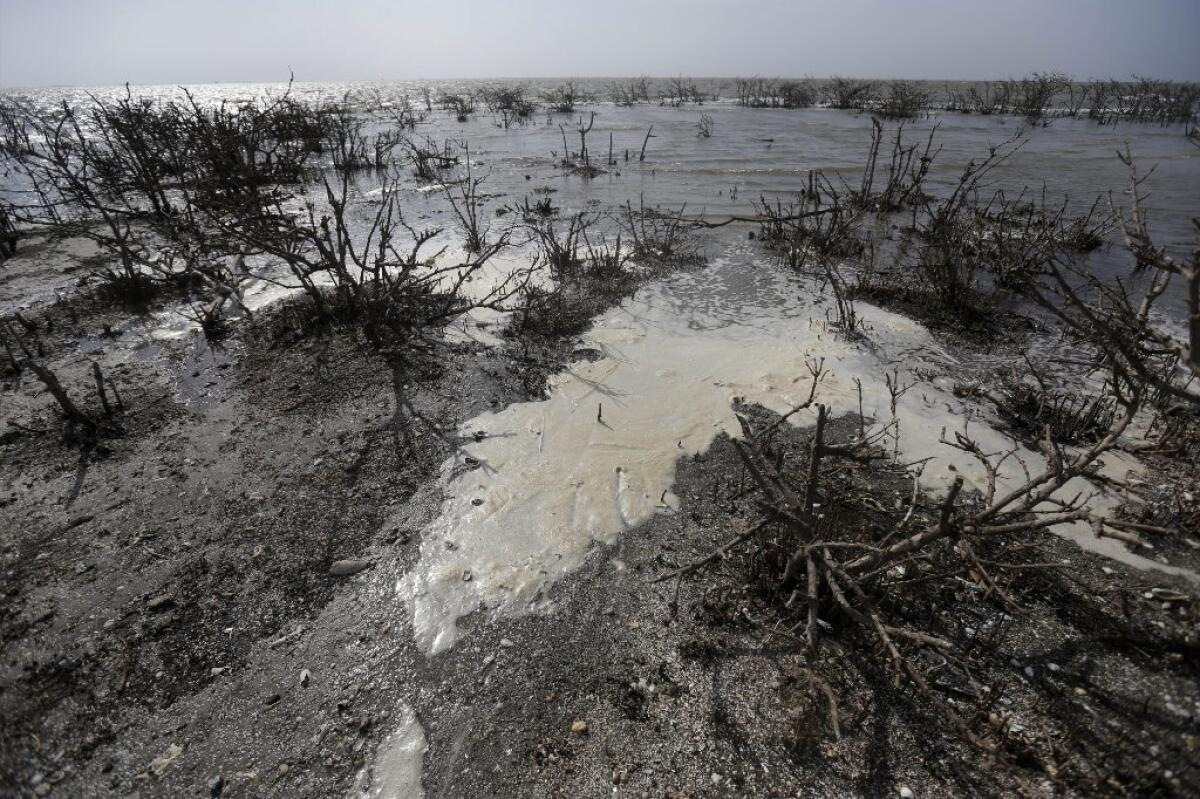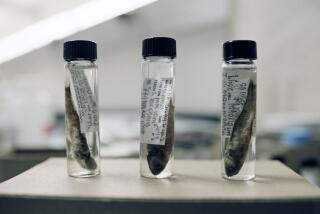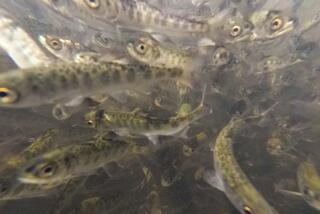Study: Gulf oil spill is sickening fish vital to seafood industry

The seafood is safe to eat and the Gulf of Mexico tourism industry is recovering three years after the nation’s worst offshore oil spill spewed more than 200 million gallons of crude oil into the waters off Louisiana. But despite that BP-sponsored commercial message, something appears to be amiss at the bottom of the Gulf’s food chain, according to new research.
Oil buried in sediments in the shallow waters of the Gulf is triggering genetic reactions in the gills and livers of local populations of killifish, a ubiquitous prey for marine species vital to the region’s economy, according to a study published this week in the review Environmental Science & Technology. Researchers linked those genetic changes to cardiovascular problems, reproductive failures and weakened and listless offspring.
“The animals are simply not hatching,” said Fernando Galvez, an environmental toxicologist from Louisiana State University, who led the study. “The ones that go on to hatch are smaller and have very little vigor.”
An otherwise hardy and ubiquitous fish adapted to the shifting conditions of the Gulf of Mexico, the killifish may be signaling a critical weakness in the maritime food chain, according to the researchers.
“It’s a canary in a coal mine; These guys don’t move around much,” said Galvez.
“All of those fish we like to eat, eat the killifish,” said Andrew Whitehead, an environmental toxicologist from UC Davis, and a co-author of the study.
The researchers analyzed fish and sediments collected from oiled and non-oiled areas of the Gulf shortly after the April 2010 spill and a year later. Gills were visibly damaged, and at the molecular level, showed sharp increases in genetic signals linked to toxic exposures. Livers showed similar responses.
The data confirmed earlier findings from the LSU researchers and others that weathered oil remains in Gulf sediments “serving as a reservoir of persistent exposure” to marine populations.
The researchers then re-created the fish’s habitat in miniature, and studied the effects of exposure on the reproductive cycle of the fish. Embryos failed to hatch or hatched poorly, and offspring were “listless,” Galvez said.
“The adult fish showed exposure long after the oil disappeared [from the water], and the oil in the sediment affected the developing embryos,” said Benjamin Dubansky, an LSU toxicologist who also participated in the study.
It may be too soon to conclude what long-term effect the spill has had on the Gulf’s fish population, the researchers cautioned, but the results appear to parallel the long-term aftermath of the Exxon Valdez spill in Alaska.
“They found in the Exxon Valdez spill that it was affecting fish for a long time,” said Dubansky. “I think this is going to go on for a long time.”
None of the claims made in the BP-sponsored commercials airing on national television are wrong, the researchers said. Abundant tests have shown the seafood is safe to eat, and there are reliable economic indicators of tourism rebound.
But those facts may be clouding the view of the spill’s effects, they said.
“All of our health data do tell us the fish is safe, but the unintended consequence of all that is we think we’re out of the woods,” Whitehead said.







